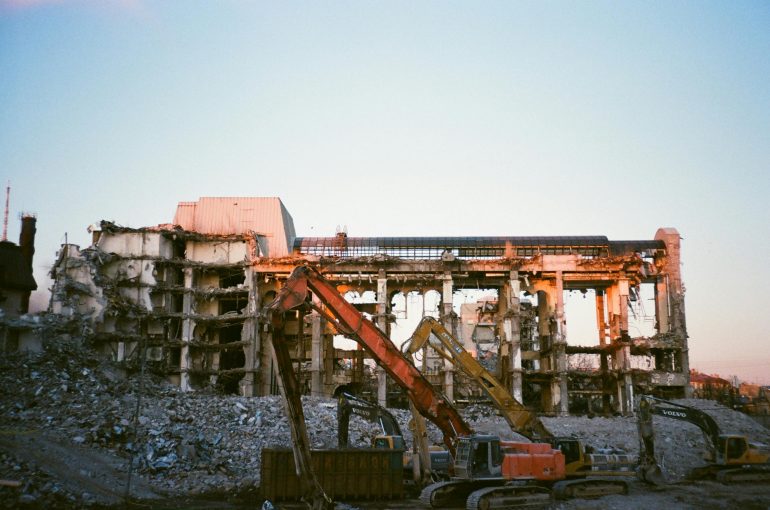NO REFUGE FOR UNAUTHORIZED BUILDINGS: SUPREME COURT UPHOLDS STRICT DEMOLITION AND EVICTION TIMELINES

BACKGROUND OF THE CASE
The case of Kaniz Ahmed v. Sabuddin&Ors. (SLP(C) No. 12199-12200/2025) originated from a public interest litigation addressed by the High Court, which tackled unauthorized constructions. The High Court, in its impugned judgment, ordered the police to issue notices to occupants of the premises to vacate by April 30, 2025, with eviction to be completed by May 16, 2025, if they failed to comply. Subsequently, the Kolkata Municipal Corporation (KMC) was directed to demolish the illegal structures by June 19, 2025, with videographic evidence to be submitted to the court. The High Court further instructed the KMC to inspect neighbouring properties for similar violations and apply the same measures if necessary. Kaniz Ahmed, the Petitioner, challenged this order by filing Special Leave Petitions (SLPs) before the Hon’ble Supreme Court, seeking to overturn the High Court’s directive or secure an opportunity to regularize the unauthorized construction.
POINTS OF DETERMINATION
The Supreme Court addressed two primary issues:
- Regularization of Unauthorized Construction: Whether the Petitioner should be granted an opportunity to seek regularization of the unauthorized construction.
- Validity of the High Court’s Order: Whether the High Court’s directive for eviction and demolition of the unauthorized construction was justified and warranted judicial affirmation.
ARGUMENTS BY THE APPELLANT
The Petitioner, argued for leniency, requesting a single opportunity to apply for regularization of the unauthorized construction. The plea rested on the possibility that the construction could be brought into compliance with legal standards, thereby avoiding demolition.
DECISION OF THE HON’BLE SUPREME COURT
The Supreme Court dismissed the Special Leave Petitions, thereby upholding the High Court’s order for eviction and demolition. The Court rejected the Petitioner’s plea for regularization and affirmed the timelines and actions mandated by the High Court.
GROUNDS FOR THE DECISION
The Court’s decision rested on several key grounds:
- Rule of Law: The Court underscored that individuals who flout legal requirements cannot seek regularization after erecting unauthorized structures. It emphasized that allowing such requests would undermine the rule of law, a cornerstone of a just society.
- Judicial Precedent: The Court relied on its recent ruling in Rajendra Kumar Barjatya (2024 INSC 990), where it issued comprehensive directives to ensure strict adherence to construction regulations. These directives prohibit leniency toward violators and mandate severe action against unauthorized constructions, reinforcing the Court’s stance in this case.
- Judicial Restraint: The Court held that courts must adopt a strict approach and refrain from judicial regularization of illegal buildings. It criticized State Governments’ regularization acts based on impact fees, arguing that such measures foster impunity and weaken legal deterrence.
- Public Interest: The Court praised the High Court’s courage and conviction in addressing unauthorized constructions through public interest litigation, aligning its decision with the broader goal of societal well-being.
CONCLUSION
The Judgement hinges on the broader legal framework governing construction regulations and the rule of law. The Supreme Court referenced its prior ruling in Rajendra Kumar Barjatya and Another v. U.P. Avas Evam Vikas Parishad and Others (2024 INSC 990), which laid down detailed guidelines for ensuring strict compliance with building rules and regulations. These guidelines emphasize obtaining completion/occupation certificates, prohibiting service connections to unauthorized buildings, and taking swift action against violations, reflecting the legal principles underpinning this case.
In conclusion, the Supreme Court’s ruling reinforces a zero-tolerance policy toward unauthorized constructions, prioritizing legal compliance over misplaced sympathy. The order was directed to be circulated to all High Courts, signaling its intent to set a nationwide precedent.
Saharsh Singh
Intern
The Indian Lawyer & Allied Services
Please log on to our YouTube channel, The Indian Lawyer Legal Tips, to learn about various aspects of the law. Our latest video, titled “What is Bail? Complete Guide to Bail Process & Legal Rights” | What is Bail? Complete Guide to Bail Process & Legal Rights in India” Legal Tips can be viewed at the link below:





































Leave a Reply